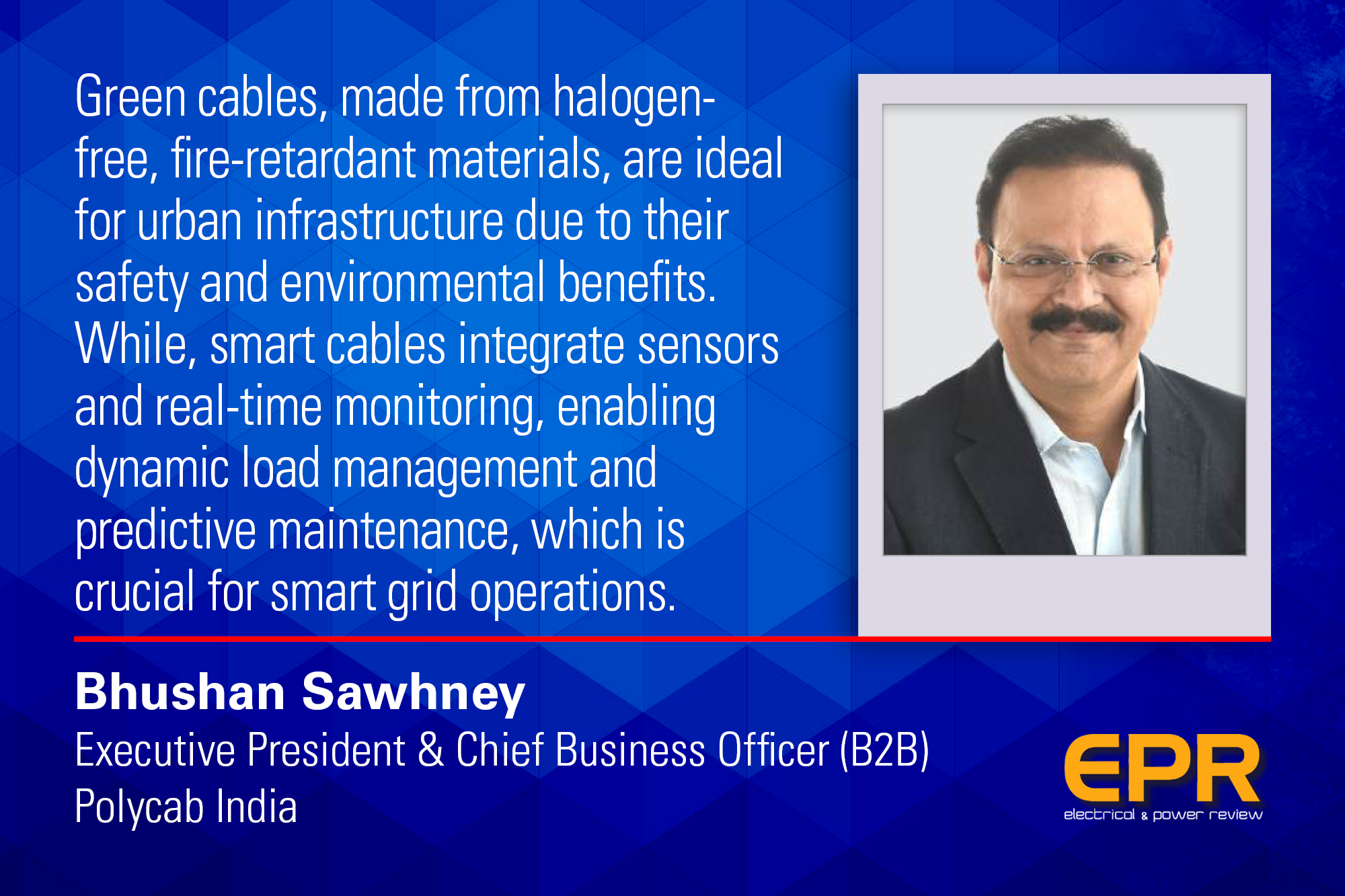Polycab smart cable innovation for enhanced grid performance
By Staff Report September 25, 2024 6:23 pm IST
By Staff Report September 25, 2024 6:23 pm IST

The company’s commitment to sustainability is evident in a 24.2 percent reduction in greenhouse gas emissions intensity and a 19.8 percent increase in renewable energy use across its facilities in FY23.
The cable industry is evolving with a focus on energy efficiency and smart grids. Polycab India Limited is at the forefront, investing in green and smart cable technologies to support sustainability goals. Bhushan Sawhney speaks with the EPR Magazine, sharing industry insights.
How is Polycab driving growth through innovation and sustainability?
The Cables and Wires Industry, a crucial component of the global electrical landscape, is undergoing a transformation driven by a need for enhanced energy efficiency, sustainability, and digital infrastructure. The rise of smart grids, renewable energy integration, and evolving regulatory standards are pushing manufacturers to innovate and adapt rapidly. The shift towards green, smart, and high-performance cables is at the forefront of this evolution, enabling industries and utilities to meet these new demands. Within this context, companies like Polycab India Limited illustrate how strategic innovation, sustainability, and market adaptation are helping industry leaders navigate these changes while driving growth.
How do your smart cables enhance grid performance and energy efficiency?
The electrical industry is increasingly focused on reducing energy loss and enhancing efficiency with green and smart cables. Green cables, made from halogen-free, fire-retardant materials, are ideal for urban infrastructure due to their safety and environmental benefits. Smart cables integrate sensors and real-time monitoring, enabling dynamic load management and predictive maintenance, which is crucial for smart grid operations. This shift supports global sustainability goals, like India’s target of 500 GW non-fossil fuel capacity by 2030. Polycab has led this transformation by investing in high-efficiency XLPE cables and smart solutions with digital sensors, advancing grid performance and energy efficiency in India.
How is your company enhancing sustainability and compliance in its cable manufacturing processes?
The cable industry’s evolving regulatory landscape necessitates adherence to stringent safety, environmental, and performance standards, driving increased R&D investments. Companies that innovate and anticipate regulatory changes are better positioned to seize market opportunities, particularly in infrastructure, automotive, and construction sectors where safety and sustainability are critical. Polycab India exemplifies this approach by offering advanced products like fire-resistant, halogen-free, and low-smoke cables that meet both domestic and international standards.What is your take on enhancing grid reliability with advanced cable technologies?
Upgrading cable infrastructure is key in enhancing power transmission efficiency and grid reliability by minimising energy losses and enabling smart grid technologies. Advanced cables like extra high voltage (EHV) and fibre-optic types are vital for modernising grids and integrating renewable energy sources. Polycab India is capitalising on this demand by expanding its production of specialised cables and investing in smart cable technologies. With a focus on innovation, quality, and sustainability, Polycab is well-positioned to meet the rising need for advanced cable infrastructure in domestic and international markets.
How has the supply chain strategy improved the company’s export growth?
Supply chain resilience has become crucial for the cable industry amid geopolitical tensions, raw material price fluctuations, and the COVID-19 pandemic. Companies are adopting strategies like supplier diversification, local sourcing, and digital supply chain tools to address these challenges. Polycab India exemplifies this approach by integrating advanced digital tools for demand forecasting and inventory management, fostering local supplier relationships, and employing multi-sourcing strategies.
These measures have bolstered operational stability and efficiency resulting in growth from export markets despite challenging environment.
We use cookies to personalize your experience. By continuing to visit this website you agree to our Terms & Conditions, Privacy Policy and Cookie Policy.